Filter by
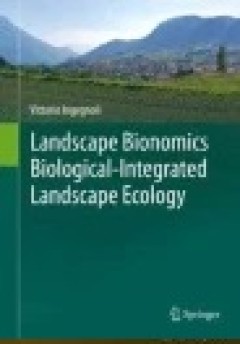
Landscape Bionomics Biological-Integrated Landscape Ecology
"Landscape Bionomics,” or “Bio-integrated Landscape Ecology,” radically transforms the main principles of traditional Landscape Ecology by recognizing the landscape as a living entity rather than merely the spatial distribution of species and communities on the territory, often analysed in separate themes (water, species, pollution, etc.). To be more exact, the landscape is identified as …
- Edition
- -
- ISBN/ISSN
- 978-88-470-5226-0
- Collation
- -
- Series Title
- -
- Call Number
- -
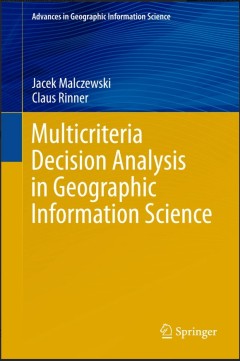
Multicriteria Decision Analysis in Geographic Information Science
This book is intended for the GIS Science and Decision Science communities. It is primarily targeted at postgraduate students and practitioners in GIS and urban, regional and environmental planning as well as applied decision analysis. It is also suitable for those studying and working with spatial decision support systems. The main objectives of this book are to effectivley integrate Multicrit…
- Edition
- 1
- ISBN/ISSN
- 978-3-662-50152-8
- Collation
- XV
- Series Title
- Advances in Geographic Information Science
- Call Number
- -
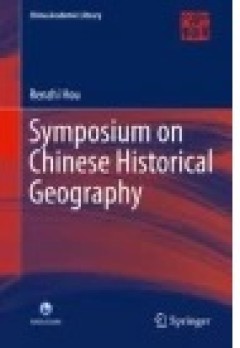
Symposium on Chinese Historical Geography
This book represents the most important academic achievements won by Dr. Renzhi Hou, one of the founding fathers of and pioneering researchers in the modern historical geography of China. His collected papers and speeches, spanning from the 1940s to the 1990s, serve as a window into Hou’s academic experience as well as the development of the historical geography of China during the second hal…
- Edition
- -
- ISBN/ISSN
- 978-3-662-45272-1
- Collation
- IX, 145
- Series Title
- China Academic Library
- Call Number
- -
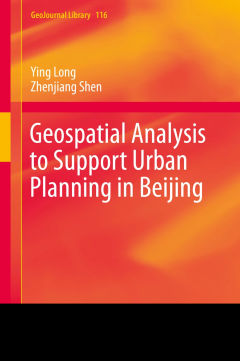
Geospatial Analysis to Support Urban Planning in Beijing
This book describes a comprehensive framework of novel simulation approaches, conventional urban models, and related data mining techniques that will help develop planning support systems in Beijing as well as other mega-metropolitan areas. It investigates the relationships between human behaviors and spatial patterns in order to simulate activities in an urban space, visualize planning alterna…
- Edition
- -
- ISBN/ISSN
- 978-3-319-19341-0
- Collation
- XXV, 272
- Series Title
- -
- Call Number
- 301 LON g
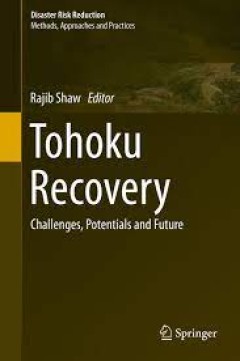
Tohoku Recovery
The March 11 disaster in 2011, known as the Great East Japan Earthquake and Tsunami, caused extensive damage in various sectors. Through the recovery process, special lessons are being learned and applied in the affected region. This book attempts to draw lessons from different issues and sectors such as policy perspectives (both national and local), the role of international NGOs, fishing indu…
- Edition
- -
- ISBN/ISSN
- 978-4-431-55136-2
- Collation
- 20 b/w illustrations, 35 illustrations in colour
- Series Title
- -
- Call Number
- -
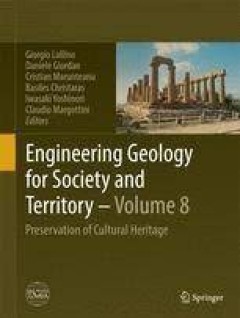
Engineering Geology for Society and Territory - Volume 8 Preservation of Cul…
This book is one out of 8 IAEG XII Congress volumes, and deals with the preservation of cultural heritage. In 1972, the World Heritage Convention linked in a single framework the concepts of nature conservation and the preservation of cultural sites. Since then, engineering geology is enlarging its contributions to national and international projects on this topic and is extending its interests…
- Edition
- -
- ISBN/ISSN
- 978-3-319-09408-3
- Collation
- 362 b/w illustrations, 59 illustrations in colour
- Series Title
- -
- Call Number
- -
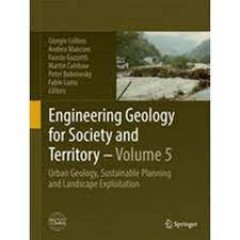
Engineering Geology for Society and Territory - Volume 5 Urban Geology, Sust…
This book is one out of 8 IAEG XII Congress volumes, and deals with the theme of urban geology. Along with a rapidly growing world population, the wave of urban growth continues, causing cities to swell and new metropolitan centers to emerge. These global trends also open new ventures for underground city development. Engineering geology plays a major role in facing the increasing issues of the…
- Edition
- -
- ISBN/ISSN
- 978-3-319-09048-1
- Collation
- 132 b/w illustrations, 616 illustrations in colour
- Series Title
- -
- Call Number
- -
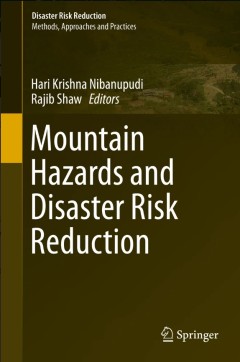
Mountain Hazards and Disaster Risk Reduction
The Hindu Kush Himalayan (HKH) region is highly vulnerable to earthquakes and water-induced disasters. This fragile mountain region is under tremendous stress from climate change and land-use degradation that has accelerated flash floods, river-line floods, erosion, and wet mass movements during the monsoon period and drought in the non-monsoon period. Against the backdrop of intensifying disas…
- Edition
- 1
- ISBN/ISSN
- 978-4-431-55241-3
- Collation
- XI, 284
- Series Title
- Disaster Risk Reduction
- Call Number
- -
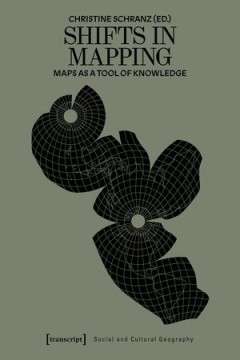
Shifts in Mapping: Maps as a Tool of Knowledge
Depicting the world, territory, and geopolitical realities involves a high degree of interpretation and imagination. It is never neutral. Cartography originated in ancient times to represent the world and to enable circulation, communication, and economic exchange. Today, IT companies are a driving force in this field and change our view of the world; how we communicate, navigate, and consume g…
- Edition
- -
- ISBN/ISSN
- 9783839460412
- Collation
- -
- Series Title
- -
- Call Number
- 307.2 SHI s

Re-Cording Lives: Governing Asylum in Switzerland and the Need to Resolve
Administrative asylum procedures are permeated by tensions between rationalities of legality, efficiency, and deterrence in asylum casework and their various effects on cases. Based on ethnographic research in the Swiss asylum administration, this book unveils the pragmatics and politics of rendering asylum cases resolvable by re-cording the lives of applicants in terms of asylum. With his read…
- Edition
- -
- ISBN/ISSN
- 9783839453490
- Collation
- -
- Series Title
- -
- Call Number
- 351.81 POR r
 Computer Science, Information & General Works
Computer Science, Information & General Works  Philosophy & Psychology
Philosophy & Psychology  Religion
Religion  Social Sciences
Social Sciences  Language
Language  Pure Science
Pure Science  Applied Sciences
Applied Sciences  Art & Recreation
Art & Recreation  Literature
Literature  History & Geography
History & Geography